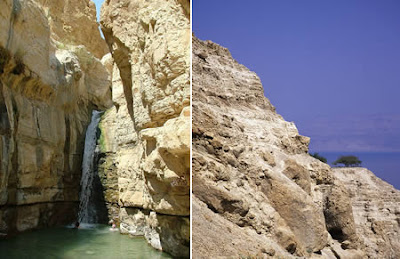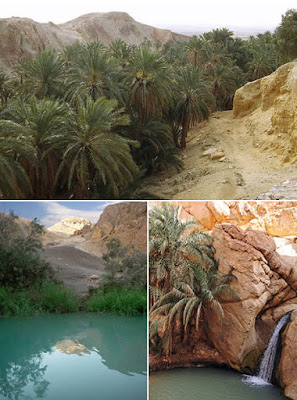I hope you will enjoy looking these Most Beautiful Oases below here.
Ubari Oasis (Libya)

Ubari is an oasis city in South-Western Libya, in the Targa valley. It lies between the Messak Sattafat plateau and Idhan Ubari sand dunes and lakes. The oasis is the second centre after Ghat for Kel Ajjer Tuareg. Neighbouring villages include Germa, and In Garran. The water is salted like the dead sea, but swimming into it is rather not a good idea as it is very dirty.
Huacachina (Peru)

Shimmering beneath the scorching sun of the Peruvian desert is an extraordinary sight - a tiny settlement, complete with lagoon, lush palm groves, carob trees, cafes, neatly clipped lawns, 100-strong population and even the odd swimming pool.
For thousands of years, Huacachina, otherwise known as the ‘oasis of Americas' - there is only one - has been a beacon of green, hidden deep amid hundreds of miles of barren desert.
Huacachina serves as a resort for local families from the nearby city of Ica, and increasingly as an attraction for tourists drawn by the sport of sandboarding on sand dunes that stretch several hundred feet high.
Ein Gedi (Israel)

En Gedi is the largest oasis along the western shore of the Dead Sea. The springs here have allowed nearly continuous inhabitation of the site since the Chalcolithic period. The area was allotted to the tribe of Judah, and was famous in the time of Solomon (Josh 15:62). Today the Israeli kibbutz of En Gedi sits along the southern bank of the Nahal Arugot.
Chebika Oasis (Tunisia)
 |
|Chebika belongs to the collection of unlikely desert oases of the mountains north of the great Tunisian chotts. Least famous, Chebika offers perhaps the most effective and dramatic experience among them. Where the mountains rise, Chebika lies. Most of the year it is so exposed to the sun that it once was known as Qasr el-Shams, Castle of the Sun.
Timia Oasis (Niger)

Timia Oasis, located on the Aïr Mountains (northern Niger), is billed as the most beautiful oasis in the country for a reason. It is not quite the image of a pool of water amidst the sand-dunes with a couple of palm-trees on either side. Instead it is a rich network of lush gardens in the middle of some of the most hostile terrain on earth- as true an oasis as you'll ever find. Oranges and pomegranates hang from branches and can be plucked (for a fee) and eaten on the spot. Date palms and citrus trees, and beneath the cool of the spreading leaves, any number of herbs, cereals and garden vegetables are grown. The Tuareg who tend the gardens export their produce all over the Aïr region- indeed in some cases all over Niger. After the searing heat of the Sahara, the Timia Oasis is the perfect rest-stop for a group of travellers, and time is well spent exploring the refreshing shade of the carefully-groomed orchards.
Gaberoun (Libya)

Gaberoun is an oasis with a large lake located in the municipality Sabha in the Libyan Sahara. The old Bedouin settlement by the western shore of the lake has been abandoned, and now lays in ruins. A rudimentary tourist camp is located on the northeastern shore, including an open patio, sleeping huts, and a souvenir shop (attended by a touareg in full costume) in the winter.
The lake is very salty, swimming can be pleasant despite the salt water crustaceans. Mosquitoes are abundant, especially in the summer. October to May is considered the best time to visit as the climate is milder.
Herðubreiðarlindir (Iceland)

On Herðubreið, situated in the Highlands of Iceland in the midst of the desert of Ódáðahraun --a very big lava field originating from eruptions of the volcano Trölladyngja--, lies an oasis called Herðubreiðarlindir with a camp ground and famous hiking trails. In former times, outcasts lived there who had been excluded from Icelandic society because of crimes they had committed.





0 comments :
Post a Comment